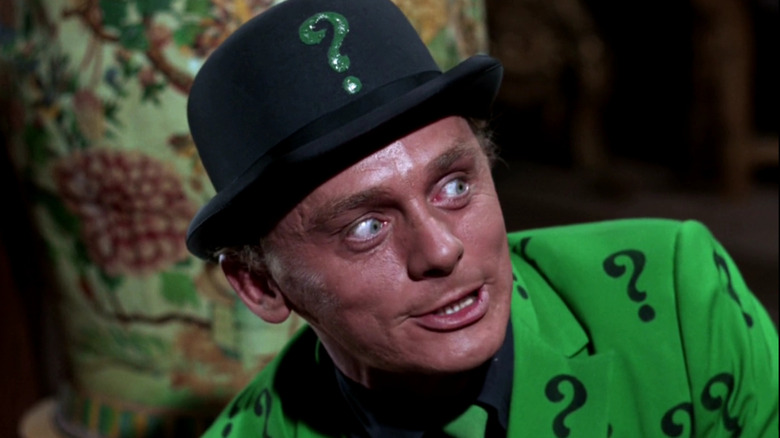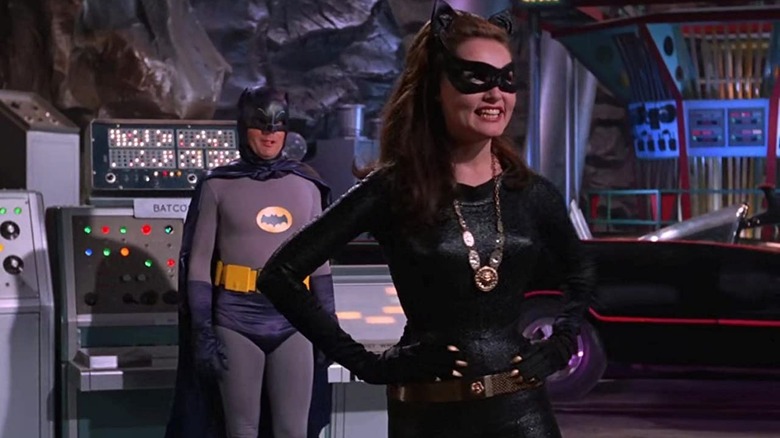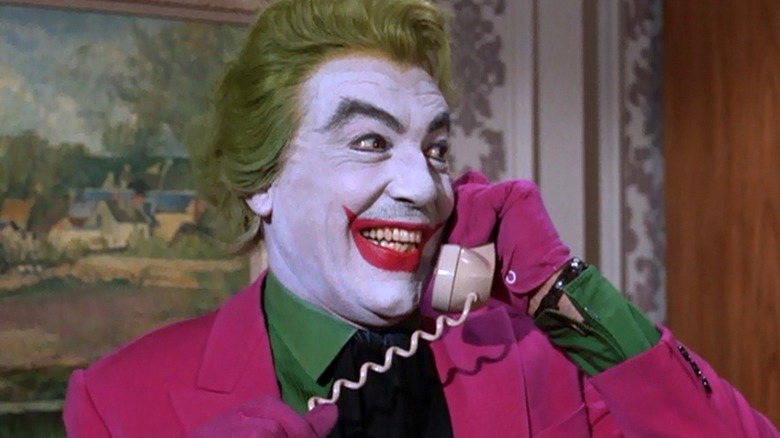The Idea For Adam West's Batman Came From A Party At The Playboy Mansion
To tamp down any speculation right away, this post will not be of a lascivious nature, and should not be confused with the rumors — started by Adam West himself in his 1994 autobiography — that he and his "Batman" co-star Frank Gorshin were once kicked out of an orgy because they wouldn't stop acting like their "Batman" characters. This is a story sans orgies.
It is a story about how William Dozier, the creator of the 1966 "Batman" TV series, became interested in the character after a TV executive went to a party at the Playboy Mansion in Chicago, and dipped into the mansion's screening room (!) to watch some of the "Batman" theatrical serials from the 1940s. This is a story chronicled by author Les Daniels in the 1999 book "Batman: The Complete History."
The conception of the 1966 "Batman" TV series was a strange convergence of trends and events that, perhaps dismaying to fans of DC Comics, had little to do with enthusiasm about extant comic book lore. "Batman" was created less out of a need to communicate the exact version of the Dark Knight as he appeared on the page and more as an exercise in pop aesthetics. The pop-art trends started by Andy Warhol had a lot to do with the way "Batman" looked, as did a general sense of ironic pop culture spoofery that lurked underneath the mainstream's surface. Adults liked "Batman" for its wry satirical elements. Kids responded to its energy, humor, and color. It was only Batman's existing fans who were upset.
The in show to watch
According to Daniels' book, Batman co-creator Bob Kane announced to a Batman fanzine in September of 1965 that there was a big-budget Batman TV series in the works. Kane announced that it was to be an hour-long program, but may eventually be split into half hours. Ultimately, "Batman" struck on a novel release schedule by airing the first half of a cliffhanger story on Wednesday nights, and the conclusion on Thursday nights. In 1965, that structure hadn't yet been decided, but Kane was enthused regardless. He announced that "[t]his is going to be the 'in' show to watch." And indeed it was. When "Batman" debuted in January of 1966, it was the hottest show on TV. At the conclusion of its first season, a movie was released in theaters. It's hard to understate the enormity of the first season of "Batman."
The script for the "Batman" pilot was based on an existing Batman story as it appeared in the May 1965 issue of the comic. Some have said that it was Dozier's idea to base the script, by Lorenzo Semple, Jr., on that issue, but Dozier eventually confirmed that he didn't start reading Batman comics until the show had already been picked up.
It was Kane who recalled the Playboy Mansion story. Kane didn't name the executive in question, only to say that he was attending a party at the Chicago Playboy Mansion where Columbia's "Batman" serials were screened. Kane, recalling the serials' tendency to end each episode with a cliffhanger, claimed that he once proposed to Dozier that the TV series be constructed in a similarly cliffhanger-centric fashion. That was how "Batman" came to be a two-night affair. The serials were also the inspiration for Dozier's florid narration.
1960s Pop art
Daniels' book also points out that comic book imagery was undergoing a renaissance thanks to the prints of Andy Warhol and the paintings of Roy Lichtenstein, both artists who painstakingly recreated the dot-color and cheap silk screen aesthetic of low-budget advertising and print media from 20 and 30 years prior. When seen as a living comic book page, "Batman" excelled, capturing the color, but also the haphazard drawing style of some of DC's cheaper output. The book describes the "Batman" premiere party as a New York "discothèque frug party" that attracted kooks and funsters. An uninvited guest even arrived in a Batman costume and was so entertaining, no one could bear to kick him out. That unnamed partygoer may serve as the parallel figure to Adam West's orgy attendance.
As mentioned above, however, many fans of the Batman comic books hated the series, especially as it became more and more popular, altering the public's perception of the character. Many preferred a darker, more "serious" version of the character and resented that Batman had become fodder for a comedic pop aesthetics experiment. In his book "The Boy Who Loved Batman: A Memoir," film producer Michael E. Uslan stated out loud that he made it his life goal to rid the world of the words "Pow!," "Sok!," and "Wham!," a reference to the on-screen comic book onomatopoeia that appeared on Dozier's show. In a way, all Batman media since the 1966 TV series has served as an antidote to it, pushing Batman further and further into the shadows. DC Comics lore is now in vogue, and James Gunn is now famously constructing an elaborate DC Comics cinematic universe from the ground up.
This may work fine for fans, but it sounds like a lot less fun.


